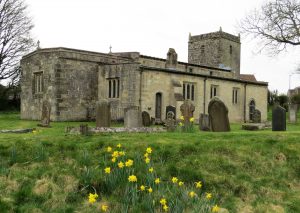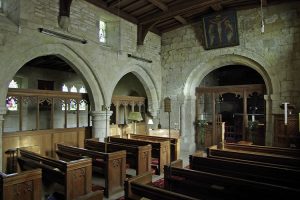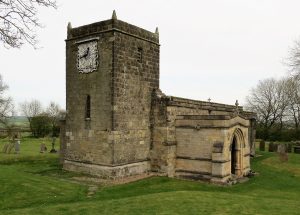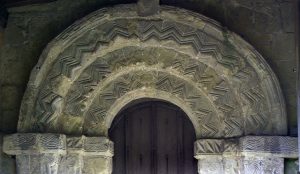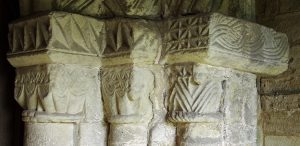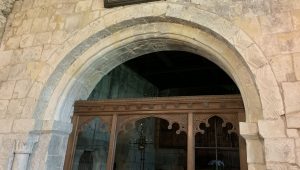The parish of Fridaythorpe is situated in what was once the wapentake of Buckrose, part of the historical East Riding of Yorkshire (see maps in Introduction). It lies 170 metres above sea level, making it the highest village on the Yorkshire Wolds.
Domesday tells us that Forne, son of Sigulf, the forerunner of the Greystoke family, was holding land in Fridaythorpe before the Conquest, along with Gamal and Orm, son of Gamal, all of whom were probably related and connected to the Anglo-Danish elite. Arnbiorn was another landholder, as well as the Archbishop of York who also held the church. By 1086 the Archbishop of York was still holding his lands, but the Anglo-Danes had forfeited their lands to King William and Odo the Bowman. The descent of the lay holdings remains patchy and at times obscure, whereas the Archbishop’s estate was given to the chapter of York Minster in the late 11th or early 12th century, the greater part forming the prebendal manor of Fridaythorpe. The prebend passed down through a succession of ecclesiastics until it came into the hands of Henry Fairfax (1588-1665), and the Fairfax family retained the lease into the early 18th century. Over the centuries St. Andrew’s Priory and St. Mary’s Abbey, both situated in York, as well as Kirkham Priory and Beverley Minster all had estates in Fridaythorpe. In the 19th century the manor house stood at the junction of Back Street and Main Street, later becoming the Farmers Arms and today the Manor Inn.
The church of St. Mary is a grade I listed building which, despite its squat, angular shape, contains some beautiful examples of Norman stonework. The south door and chancel arch date back to c1140 and the tower to c1190, though the latter’s decorative clock with its inscription “Time is short, Eternity is long” is dated 1903. Later additions to the church include the 13th century north aisle and the clerestory windows. By the 17th century the church was in poor condition and repair work and some alteration took place. Further repairs were needed in the 19th century, and in the early 20th Sir Tatton Sykes II of Sledmere House paid for a major restoration. The north aisle and south porch were rebuilt, but both had to be rebuilt again in 1999 and 2010 owing to structural faults. The church interior features a Norman font, a priest’s grave slab with an incised cross dated c1350, fragments of wall paintings, an 18th century altar and triptych brought from Sledmere Church and a 20th century rood screen.
A number of members of the Pickerings of Holderness passed briefly through Fridaythorpe, but the most prominent Pickering was Robert (1823-1893) of the Pickerings of Ryedale (9th generation). He was born in Rillington, but in 1851 was a master tailor lodging in Fridaythorpe in the residence of Robert Harland, the local blacksmith, whose daughter Sarah he married the following year. It was in Fridaythorpe that he practised his trade, and in 1871 was living with his wife and two daughters in Pickering’s Row, one of a number of rows named, presumably, after their residents. He became a stalwart of the Wesleyan Methodist chapel and was elected to the five-member school board in 1886.
Sources:
https://www.genuki.org.uk/big/eng/YKS/ERY/Fridaythorpe
https://en.wikipedia.org/wiki/Fridaythorpe
https://opendomesday.org/place/SE8759/fridaythorpe
Victoria History of the County of York, East Riding, vol. 8, pp. 85-100 (not online)
Church of St. Mary: https://historicengland.org.uk/listing/the-list/list-entry/1346479?section=official-list-entry
English Churches, Sykes Churches of the Yorkshire Wolds: http://wasleys.org.uk/eleanor/churches/england/yorkshire/sykes_churches/fridaythorpe/index.html

